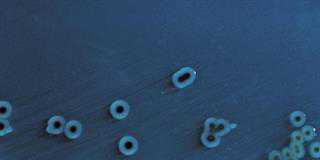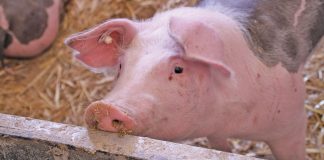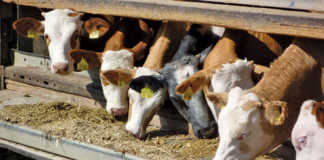Diarrhoea means “a flowing through” – a perfect description of how the disease affects both humans and animals. In the case of sheep and goats, it turns droppings soft, watery and smelly and can lead to dehydration through fluid loss. Conditions that can cause diarrhoea in sheep and goats include colibacillosis, paratyphoid, Johne’s disease, Rift Valley fever (Slenkdalkoors), coccidiosis, worms and toxic plants. This week we’ll look at colibacillosis.
The germ that causes colibacillosis is found in droppings of sick sheep and goats. Other animals become sick when they eat food or drink water contaminated with these droppings.
Most at risk are lambs/kids under two weeks old. This can be because:
- Lambs need to drink the first milk, called colostrum, from their mothers. This protects them to a certain extent from colibacillosis and other diseases. If lambs don’t drink this milk, they’re more likely to get sick.Lambs may already be sick with another disease, making them more vulnerable to colibacillosis.
- Lambs may be stressed by moving them to another location or putting too many animals together.
Signs in live sheep and goats
- The animals are depressed and not eating.
- They have “white scours”, a watery, whitish-yellow or greyish diarrhoea.
- The umbilical cord is sometimes red and swollen.
- The back legs are dirty with droppings.
Signs in dead sheep and goats
The gut is usually redder than normal and filled with a greyish or yellowish liquid.
Treatment
Colibacillosis can be treated with antibiotics. It’s also important to give sick lambs sufficient water and electrolytes to prevent dehydration. Ewes can be vaccinated six to eight weeks before birth to protect
their lambs.
Source: Animal Health for Developing Farmers, ARC-Onderstepoort Veterinary Institute (ARC-OVI).













